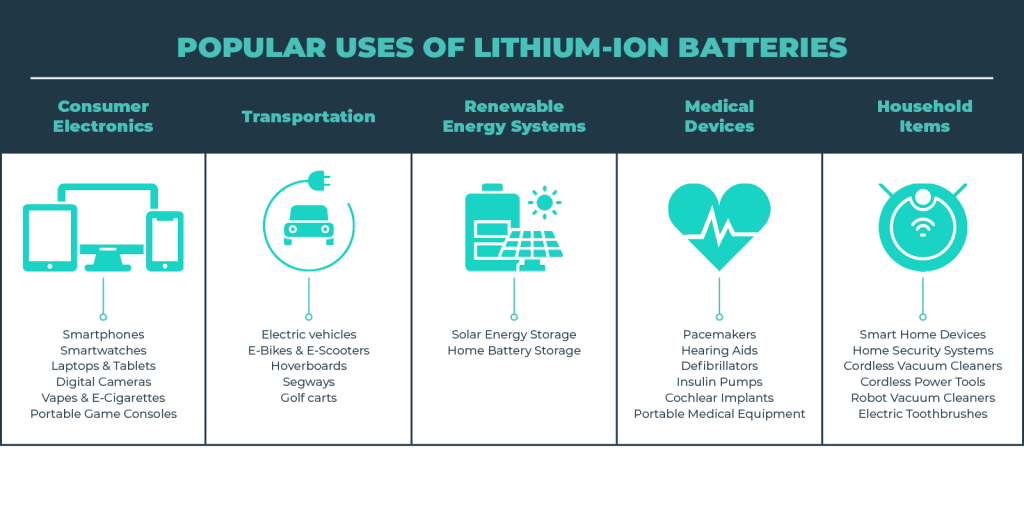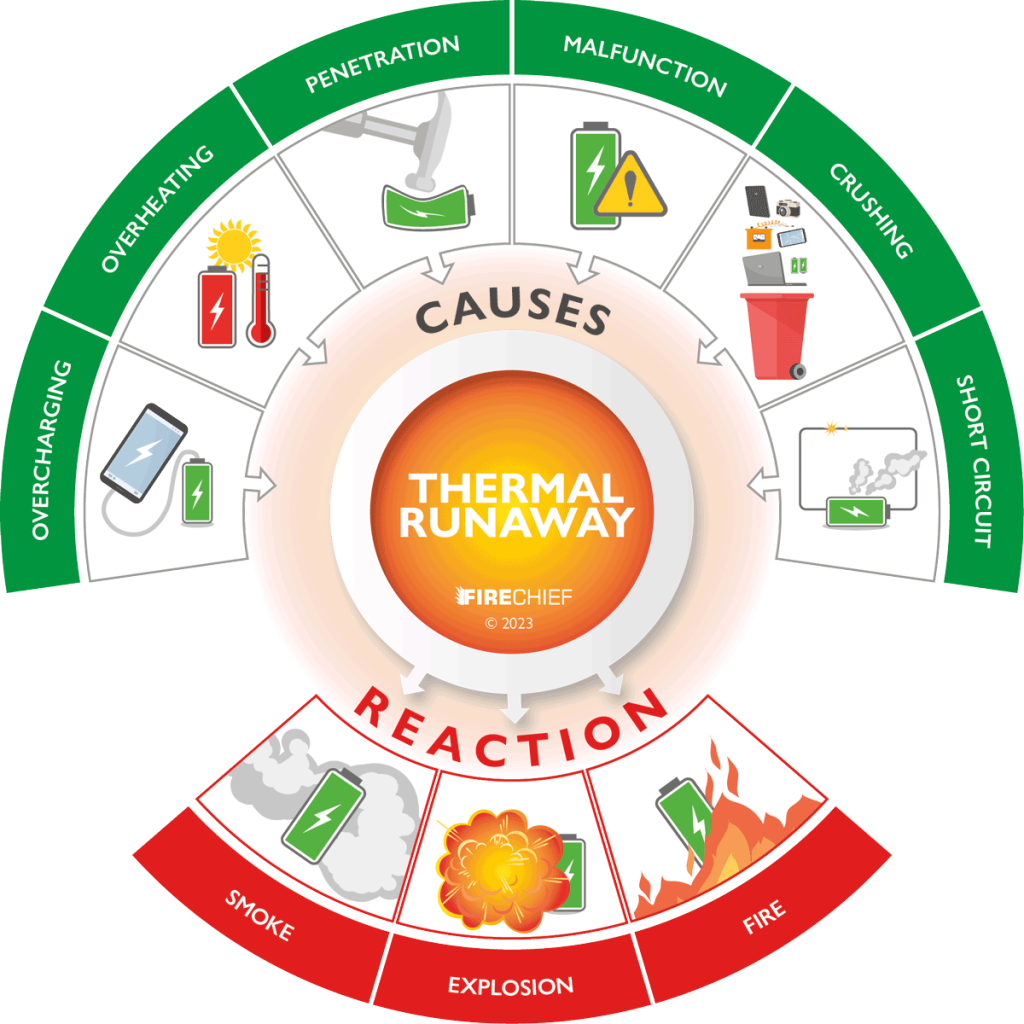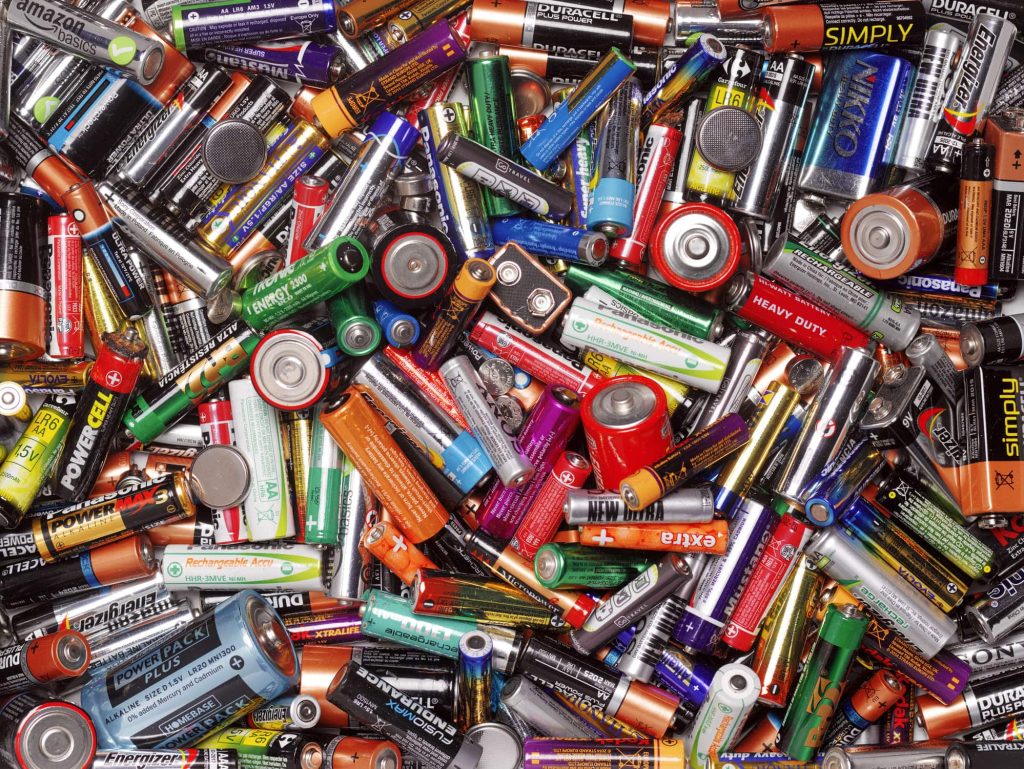Key takeaways:
- Lithium-ion batteries are a ubiquitous source of power in most modern technology, and they have become integral to our daily lives. But they come with a pretty big fire risk to both homes and businesses when not handled correctly.
- The average household will own around 33 items powered by lithium-ion batteries by 2026.
- Improper disposal of lithium-ion batteries is one of the main causes of fires in Australia. Australia's seen more than 1,000 battery-related fires just in the past year.
- To prevent the risk of fire, use compliant charging equipment, avoid extreme temperatures, don't overcharge batteries, and always dispose of damaged, dead, or old batteries at one of the thousands of battery recycling locations available across Australia (B-cycle or RecyclingNearYou).
Lithium-ion batteries have become integral to modern life in Australia, powering everything from smartphones and laptops to electric vehicles and renewable energy storage systems. And the global market for lithium-ion batteries is only going to grow over the coming decades, with an anticipated annual growth of 27% forecast for every year between now and 2030.
The allure of these batteries is understandable – they are lightweight, compact, rechargeable, long-lasting, have high energy density, and play an important role in the transition to net zero – making them the preferred choice for both consumers and businesses. However, as their usage and popularity continues to expand, so do the number of lithium-ion battery-related fires. Just in the past year, Australia has seen more than 1,000 fires caused by these batteries.
By 2026, the ACCC estimates that the average household will own around 33 items powered by lithium-ion batteries.
Popular uses of lithium-ion batteries
You might be surprised to know how many electronic devices rely on lithium-ion batteries.

Risks from lithium-ion batteries, and why are they catching fire?
Lithium-ion batteries are energy-dense and contain material that is highly flammable. In the event of a fire, lithium-ion batteries can release toxic gases such as hydrogen fluoride, hydrogen chloride, and hydrogen cyanide. Some batteries may also contain toxic chemicals, heavy metals and other environmental pollutants that can contaminate water supplies, soil, and ecosystems when incorrectly disposed of.
The ACCC saw a 92% increase in reported lithium-ion battery incidents including swelling, overheating and fires in 2022 compared to 2020.
There are several situations that can lead to lithium-ion batteries catching fire. The most common include:
1. Overcharging or overheating: Charging batteries beyond their recommended capacity or exposing them to high temperatures can lead to thermal runaway. This is where a lithium-ion battery overheats, causing some of the materials to gasify (i.e. a solid or liquid converts to a gas). That gas then creates enough pressure for an explosion, releasing toxic and flammable gases, and an intense, self-sustaining fire. Australia's hot climate exacerbates the risk of thermal runaway, particularly in regions prone to heatwaves
2. Using non-compliant charging equipment: The growing number of counterfeit or substandard lithium-ion batteries greatly increases the chance of fire incidents happening due to the varying qualities of battery management systems - the system in a product that regulates the voltage, current, and other safety features related to the battery.
3. Physical damage: Batteries that are swollen, bulging, cracked, dented, punctured, or crushed can have their internal structure compromised, leading to short circuits and fires. Dropping or mishandling devices can cause damage that might not be immediately visible but can result in battery failure and fires later on.
4. Improper disposal: Throwing lithium-ion batteries into home garbage or recycling bins can lead to them being punctured or crushed, causing fires in waste processing facilities, or the garbage truck itself.
- Canberra’s recycling plant burnt down in 2022 due to a lithium-ion battery fire and is still out of operation.
- An incorrectly disposed of battery ignited a blaze inside a Sydney garbage truck during collection in February 2023.
Once a battery catches fire, temperatures can go from 100 degrees Celsius to over 1,000 degrees Celsius in just one second.
How to safely manage lithium-ion batteries
Considering the widespread use and variety of devices that are powered by lithium-ion batteries, the best thing to keep ourselves safe is to learn how to use and dispose of them correctly.
Here are some important tips to follow to reduce your risk of fire:
1. Use genuine batteries:
- Always use genuine, manufacturer-approved lithium-ion batteries for your devices. Counterfeit or low-quality batteries tend to lack proper safety features.
2. Proper charging:
- Use chargers that are manufactured by the same company as the device, and that are designed specifically for that type of device.
- Ensure chargers have the Australian Regulatory Compliance Mark
- Avoid overcharging batteries and unplug them once fully charged to prevent overheating.
- Charge batteries on hard, non-ignitable surfaces like concrete floors or tiles. Never on surfaces like beds, sofas, or carpet.
- Do not use or charge batteries that are swelling, leaking, overheating, cracked, dented, punctured, or crushed.
- Do not charge batteries while sleeping or when not at home.
- Store and charge large batteries, such as those in e-bikes, e-scooters, and power tools, in the garage, away from living areas.
3. Avoid extreme temperatures:
- Never store or leave batteries and devices in areas where they can be exposed to heat or moisture.
- Avoid exposing them to direct sunlight, heaters or freezing temperatures, as this can affect their performance and increase the risk of fire.
- Store devices in a cool, dry place away from flammable materials and sources of heat.
4. Handle with care:
- Avoid dropping, crushing, or puncturing lithium-ion batteries, as physical damage can lead to internal short circuits and thermal runaway.
- Handle them gently and store them in a secure, protective case when not in use.

Source: Firechief Global
5. Dispose of properly:
- Never dispose of batteries (or any e-waste) in household rubbish, recycling bins or kerbside hard waste collections. They can cause fires during waste collection, transportation, handling and processing.
- For regular household batteries, rechargeable batteries, and easily removable batteries (e.g. power tools, digital cameras) tape the battery's terminals with clear sticky tape, then visit B-cycle to find your nearest battery recycling drop-off location.
- For all other batteries (including smartphones, laptops, vapes, and car batteries), visit Planet Ark's recyclingnearyou.com.au.
Midland's brokers specialise in ensuring your business has the right insurance coverage to protect you against emerging risks, like lithium-ion batteries. To chat with one of our brokers about your existing insurance policy, you can give us a call on 1300 306 571, or get in touch with us via our website.
References:
- https://www.dfes.wa.gov.au/hazard-information/fire-in-the-home/lithium-ion-batteries#
- https://waster.com.au/the-alarming-dangers-of-lithium-ion-battery-fire-in-australia/
- https://www.fire.nsw.gov.au/page.php?id=9426
- https://www.coverforce.com.au/insurance-news/news/the-risks--safety-measures-of-lithium-ion-batteries/800514324/
- https://www.abc.net.au/news/2024-03-13/lithium-ion-fires-recycling-plants-trucks-vapes-exploding/103582110
- https://www.productsafety.gov.au/products/electronics-technology/lithium-ion-batteries
- https://www.accc.gov.au/media-release/consumers-urged-to-use-and-store-lithium-ion-batteries-safely-to-prevent-deadly-fires
- https://au.worx.com/how-to-recycle-lithium-ion-power-tool-batteries-in-australia












